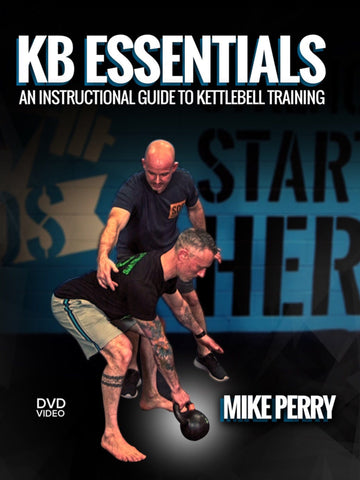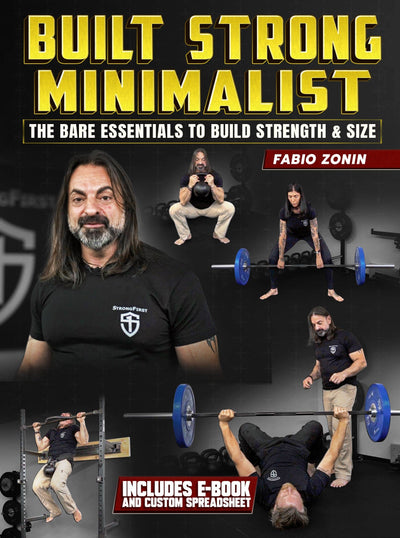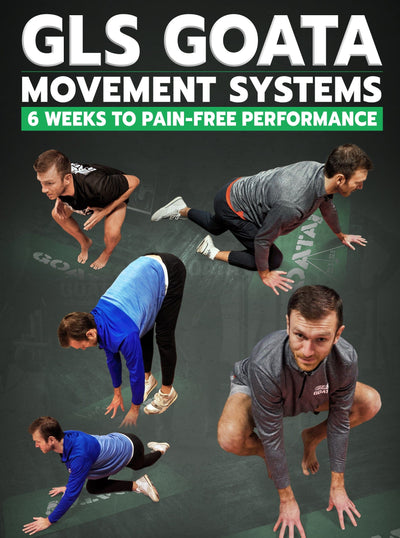Kickstand Deadlift Kettlebell
When it comes to building strength, improving posture, and developing a strong posterior chain, few exercises rival the deadlift. The deadlift targets multiple muscle groups and is a fundamental movement pattern for both athletes and fitness enthusiasts. In this blog post, we'll explore various kettlebell deadlift variations, with a specific focus on the kickstand deadlift kettlebell. We'll also cover other effective kettlebell deadlift exercises, including the kettlebell suitcase deadlift, sumo deadlift kettlebell, kettlebell deadlift row, and kettlebell Romanian deadlift (RDL).
What this article covers:
- Benefits of the Kickstand Deadlift Kettlebell
- Proper Form for the Kickstand Deadlift Kettlebell
- Kettlebell Deadlift
- Kettlebell Suitcase Deadlift
- Sumo Deadlift Kettlebell
- Kettlebell Deadlift Row
- Kettlebell Romanian Deadlift (RDL)
When it comes to building a strong and resilient body, incorporating deadlift variations into your training routine is essential. Among the various deadlift variations, the kick stand deadlift kettlebell stands out as an effective exercise for targeting the posterior chain and improving stability. In this blog post, we'll dive deep into the kickstand deadlift kettlebell, exploring its benefits, proper form, and ways to incorporate it into your workouts. Get ready to unlock your strength potential and elevate your fitness journey with this powerful exercise.
Benefits of the Kickstand Deadlift Kettlebell:
The kickstand deadlift kettlebell offers a multitude of benefits that make it a valuable addition to your training repertoire.
Firstly, the kickstand deadlift kettlebell primarily targets the glutes, hamstrings, and lower back, effectively strengthening your posterior chain. By engaging these muscles, you improve overall power, stability, and athleticism. Secondly, performing the kickstand deadlift kettlebell requires a stable and engaged core. This exercise activates your abdominal muscles, obliques, and deep stabilizers, promoting core strength and enhancing functional movement patterns.
Lastly, with the kickstand deadlift kettlebell, you work one leg at a time, challenging your body's balance and stability. By focusing on unilateral strength, you can identify and address muscle imbalances, leading to improved symmetry and reduced injury risk.
Proper Form for the Kickstand Deadlift Kettlebell
To maximize the benefits and safety of the kickstand dead lift kettlebell, it's crucial to maintain proper form.
Start by standing with your feet hip-width apart, toes pointing forward. Place a kettlebell slightly behind one foot, angled diagonally. Next, hinge at the hips, maintaining a neutral spine, and reach down to grip the kettlebell handle with the hand opposite to the working leg. Keep your back straight and chest lifted throughout the movement.
Engage your core and glutes as you push through the heel of your front foot, lifting the kettlebell off the ground. Maintain a strong posture and avoid rounding your back or leaning excessively to one side.
Fully extend your hips and stand up tall, ensuring your shoulders are square and your working leg is slightly behind you. Finally, lower the kettlebell back down in a controlled manner, returning to the starting position.
Incorporating the Kickstand Deadlift Kettlebell into Your Workouts:
Now that you understand the benefits and proper form of the kickstand deadlift kettlebell, let's explore some ways to incorporate it into your workouts. Consider including the kickstand deadlift kettlebell as a primary exercise in your lower body or posterior chain workouts. Perform 3-4 sets of 8-12 repetitions on each leg, gradually increasing the weight as you progress.
Alternatively, you can integrate the kickstand deadlift kettlebell into a circuit routine, combining it with other compound exercises like squats, lunges, and rows. This will provide a challenging full-body workout while promoting muscle endurance and cardiovascular fitness.
Lastly, use the kickstand deadlift kettlebell as a corrective exercise to address muscle imbalances and improve stability. Perform lighter sets with a focus on perfecting your form and enhancing body awareness.
Kettlebell Deadlift
The kettlebell deadlift is an excellent starting point for beginners and provides a solid foundation for more advanced variations. To perform the kettlebell deadlift, stand with your feet shoulder-width apart and place a kettlebell between your feet. Hinge at the hips, keeping your back straight and chest up. Grasp the kettlebell handle with both hands, engage your core, and drive through your heels to lift the kettlebell off the ground. Throughout the movement, maintain a neutral spine and lower the kettlebell back down under control. The kettlebell deadlift primarily targets the hamstrings, glutes, and lower back, while also engaging the core and grip strength.
Kettlebell Suitcase Deadlift
The kettlebell suitcase deadlift places emphasis on unilateral strength, stability, and balance. To perform the kettlebell suitcase deadlift, place a kettlebell beside one foot while assuming a hip-width stance. Hinge at the hips and grip the kettlebell handle with the hand opposite to the kettlebell. Keep your back straight, chest up, and core engaged. Drive through your heels, lift the kettlebell off the ground, and stand up tall. Maintain proper form and avoid twisting or leaning to one side. Lower the kettlebell back down under control and repeat on the other side. The kettlebell suitcase deadlift targets the glutes, hamstrings, quadriceps, and core, while improving balance and stability.
Sumo Deadlift Kettlebell
The sumo deadlift kettlebell variation places more emphasis on the inner thighs, quadriceps, and glutes. To perform the sumo deadlift kettlebell, stand with your feet wider than shoulder-width apart, toes pointed slightly outward. Place a kettlebell on the ground in front of you, between your legs. Hinge at the hips, grasp the kettlebell with both hands, and engage your core. Drive through your heels, lift the kettlebell, and stand up tall. Maintain an upright torso and avoid rounding your back. Lower the kettlebell back down under control. The sumo deadlift kettlebell variation strengthens the inner thighs, glutes, quadriceps, and lower back, while also improving hip mobility.
Kettlebell Deadlift Row
Combining the benefits of a deadlift and a row, the kettlebell deadlift row targets the back muscles, especially the lats and upper back. To perform the kettlebell deadlift row, stand with your feet shoulder-width apart and a kettlebell between your feet. Hinge at the hips, grip the kettlebell handle with one hand, and engage your core. Drive through your heels, lift the kettlebell off the ground, and stand up tall. As you reach the top of the movement, pull the kettlebell towards your body, retracting your shoulder blade. Lower the kettlebell back down under control, and repeat on the other side. The kettlebell deadlift row enhances back strength, improves posture, and engages the core and grip strength.
Kettlebell Romanian Deadlift (RDL)
The kettlebell RDL is an effective exercise for targeting the hamstrings, glutes, and lower back, while also improving hip mobility. To perform the kettlebell RDL, stand with your feet hip-width apart, holding a kettlebell with both hands in front of your body. Hinge at the hips, pushing your glutes back while maintaining a slight bend in your knees. Lower the kettlebell toward the ground, keeping it close to your body and your back straight. Feel the stretch in your hamstrings and glutes, and then return to the starting position by driving through your heels and squeezing your glutes. Maintain proper form throughout the exercise, focusing on hip hinging rather than squatting. The kettlebell RDL enhances hamstring and glute strength, improves hip mobility, and reinforces proper hip hinge mechanics.
Incorporating kettlebell deadlift variations into your training routine can yield significant strength gains, improve posture, and enhance overall athletic performance. The kickstand deadlift kettlebell, kettlebell suitcase deadlift, sumo deadlift kettlebell, kettlebell deadlift row, and kettlebell Romanian deadlift (RDL) provide a comprehensive set of exercises to target different muscle groups and movement patterns. Remember to start with appropriate weights, maintain proper form, and progress gradually as your strength and technique improve. So, grab a kettlebell and unleash the power of the deadlift variations to transform your fitness journey.
Check out the kettlebell collection available at Strong and Fit!
Did you find the blog beneficial? If so, consider exploring our other guides.
- Kettlebell Sumo Deadlift High Pull
- Double Kettlebell Deadlift
- Banded Kettlebell Deadlift
- Kettlebell Deadlift vs Barbell
- Staggered Kettlebell Deadlift
- Kettlebell Glute Workout
- Kettlebell Swings for Glutes
- Kettlebell Glute Bridge
- How to Build Glutes with Kettlebells
- Single Leg RDL with Kettlebell
- Kettlebell Leg Lifts
- Kettlebell Stiff Leg Deadlift
- Single Leg Kettlebell Squats
- Kettlebell Leg Extensions
- The Two Arm Kettlebell Swing





